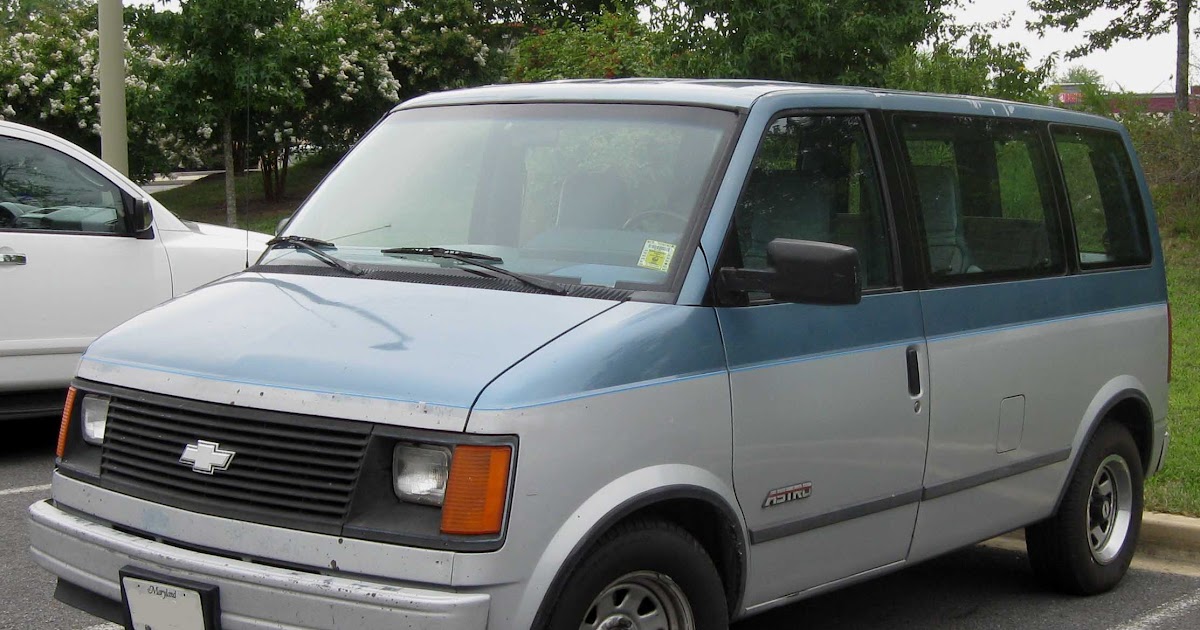The Chevy Astro: A Death Trap That Got Safer… Eventually

A 1985-1989 Chevy Astro. Two words: don’t crash.
In late 1983, Chrysler launched a new type of vehicle known as a “minivan”. The minivan was a sort of compromise between the station wagons then known for hauling families and a full-size van. It offered more room and versatility than the station wagons, without all of the bulk of a full-size van.
Nevertheless, there was still a big gap between the minivan and the full-size van. Enter GM, who introduced the Astro “midivan”, starting production on September 13, 1984 as a 1985 model. Basically a scaled-down full-size van, the Astro carved out a niche and found millions of buyers in its 21-year lifespan.
Here is NHTSA’s star system: as used on 1979-2010 vehicles:
0-10% severe injury risk – 5 stars
11-20% – 4 stars
21-35% – 3 stars
36-45% – 2 stars
46-100% – 1 star (in my opinion, anything 90-100% should’ve been 0 stars, as that’s a likely fatality)
One of these early customers was NHTSA, who bought a 1985 Astro and slammed it into a concrete barrier at 35 mph on February 21, 1985. The results were among the worst of any 1985 vehicle; with a driver HIC of 2,202 and 70 chest G’s and a passenger HIC of 1,597 and 61 chest G’s, the Astro had a whopping 96% risk of severe injury to the driver and 72% for the passenger. Given that the injury assessment reference values (the limits for likely serious injury) are a HIC of 1,000 and 60 chest G’s, the Astro was the only 1985-model vehicle tested out of 30 that failed on all four parameters – HIC and chest G for driver and passenger. Not surprisingly, the Astro got just 1 star for each occupant.
The Astro got a second chance in the 1988 model year, and saw some improvement in a March 8, 1988 test. Forces on the driver dropped to a HIC of 1,603 and 72 chest G’s, while the passenger suffered a HIC of 1,424 and 63 chest G’s. With the risks of severe injury still at 78% for the driver and 61% for the passenger, the Astro still fell firmly in the 1-star range, also repeating the feat of being the only vehicle tested in its year to fail on all four parameters (there were 35 ’88’s tested)
The 1989 Astro was tested on March 31, 1989. There was a slight backslide this time, with the driver suffering a HIC of 1,849 with 64 chest G’s and the passenger a HIC of 1,838 with 64 chest G’s; that’s an 87% severe injury risk for the driver and 86% for the passenger, yet another low-end 1-star performance. In addition, the driver’s left femur would probably be broken. This time around, the Suzuki Sidekick and Peugeot 505 would join the Astro in failing on all four parameters in 1989.
After three failures, the Astro would see no improvement on its fourth performance, flunking a January 1, 1992 test to become the worst performer of the 1992 model year. The driver HIC was 2,065 with 61 chest G’s, and the passenger HIC was 1,815 with 68 chest G’s, for a severe injury risk of 92% for the driver and 86% for the passenger. This put it, once again, in the 1-star range for both occupants. To add insult to injury, the Astro was the lone 1992 vehicle to get 1 star for both occupants and the only vehicle tested at any time in 1990 or later to fail on all four parameters.
But things were about to get a little less dismal for the Astro. In March 1993, halfway through the 1993 model year, Chevy began offering a driver air bag on the Astro, and NHTSA tested one on August 31, 1993, the lone Astro to not be tested in the first quarter of the year. Models equipped with the bag saw forces drop to a driver HIC of 832 with 62 chest G’s, while the passenger HIC was 1,512 with 60 chest G’s. The driver’s risk of severe injury dropped to 31%; the still airbagless passenger’s, at 66%, was still in the range it had been in on the earlier models. The Astro finally got its first stars above one, with 3-stars for the driver and still just 1 for the passenger. The driver air bag was made standard on 1994 Astros, so their results are the same as the ’93s with the optional air bag.
Mention “Chevy Astro” to a car-safety enthusiast and they’ll probably think of a 1996 Astro bending in half during the IIHS offset crash test. While the redesigned, second-generation 1996 Astro did get a Poor rating in this test, at least it was survivable; head and chest injuries were unlikely, though there probably would be at least one broken leg. Given that the second-generation Astro has a beefed-up structure compared to the first-generation, as well as standard dual air bags, it’s highly likely that had a first-generation Astro been tested, injury measures to the driver would have been fatal.
In the NHTSA full-frontal test, the 1996 Astro, tested on February 6, 1996, passed with a driver HIC of 613 with 60 chest G’s and a passenger HIC of 412 with 69 chest G’s. Severe injury risks were 25% for the driver and 33% for the passenger. Although the HICs were much improved, forces on the chest remained problematic, and the ’96 Astro got 3-stars for driver and passenger.
The last Astro NHTSA tested was the 1999 model, on February 12, 1999. This time around, the driver HIC was 529 with 65 chest G’s and the passenger HIC was 301 with 51 chest G’s. Unfortunately, exact injury risks aren’t readily available at this time, but it got 3 stars for driver and 4 stars for the front passenger.







